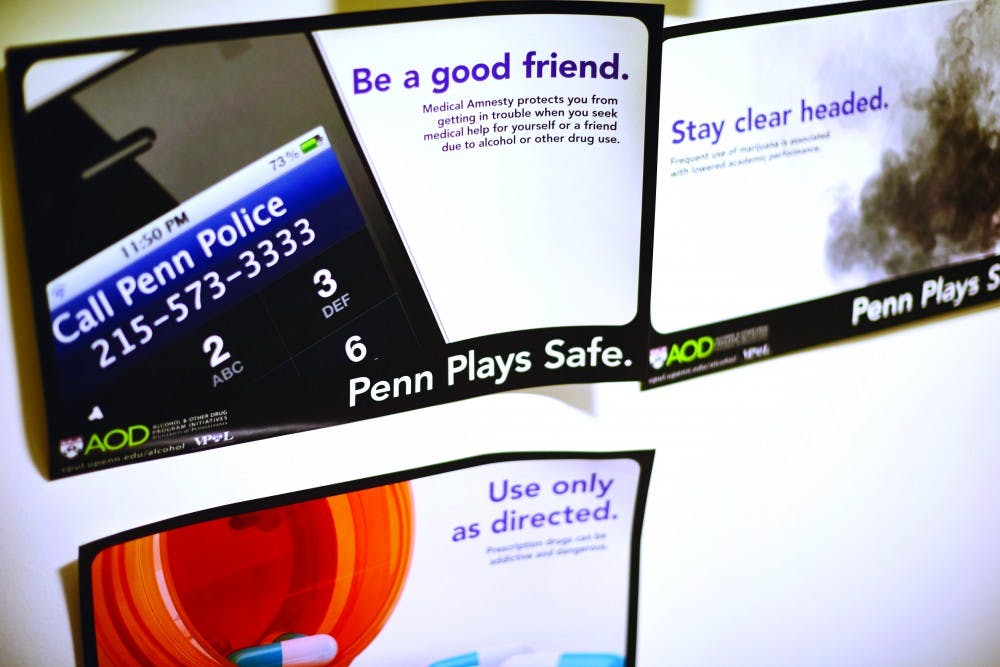Every Penn student who has lived in a dorm has inevitably seen one of many posters warning of the dangers of drugs and alcohol and suggesting safe practices. While they may question the posters' intent and impact, the Office of Alcohol and Other Drug Program Initiatives stresses that their primary goal is to help students.
Director of AOD Noelle Melartin said that the posters are trying to bring education on issues of substance abuse to “another level.”
“We wanted to grab attention with bold images and simple text because we know that students are not going to read something for 20 minutes," Melartin said. "If a student sees the medical amnesty poster hanging on a wall, in case they didn’t hear about medical amnesty from other places, now they can get this information and know in the back of their minds that they can get help on this campus and they won't get in trouble."
The posters, which have been a staple of Penn dorms' decor for a number of years, are updated every semester and come in two main styles: “Penn Plays Safe” and “It’s a Science." While the “Penn Plays Safe” posters focus on providing concise facts related to reducing the harm of alcohol and other drugs, the “It’s a Science” posters delve into certain topics in greater depth.
Many students, especially freshmen who are new to seeing posters like these around campus, are unsure of the impact the posters have.
“They definitely mean well, but I don’t think they do anything. I mean no one seems to read them and a lot of them are just on the floor at this point," College freshman Sydney Acquaye said.
College freshman Jackson Betz also said he questions the posters' effectiveness.
“People are still afraid to call for help, despite the medical amnesty posters. It’s also weird how they seem to be promoting alcohol," Betz said. "For someone like me who is not a big partier or drinker, it’s weird that the posters are almost encouraging drinking."
RELATED:
Penn announces new head of Office of Alcohol and Other Drug Program Initiatives
Q&A with the new director of the alcohol and drug program office
Despite some students’ claims that posters encouraging students to count their drinks or drink water during a night out condone alcohol consumption on campus, Melartin stresses that the AOD’s purpose is to simply educate and help students.
“What we are trying to convey through these posters and the rest of our work here is that there are ways to drink and not experience those negative consequences," Melartin said. “Our office is a harm reduction office. Harm reduction means that we recognize that students are doing certain things like consuming alcohol whether or not it is legal for people their age, and we also recognize and see all the time the consequences that students, or any humans, can experience as a result of drinking in a high-risk way.”
While Melartin stressed that all of their information is “scientific," some students like Engineering freshmen Jason Grosz and Vedang Joshi still question the validity of some of the posters.
“I don’t even think some of [the posters] are true. I mean, there’s no way a cup of jungle juice would cause someone to black out,” Grosz said.
“It seems like they are just trying to scare people,” added Joshi.
No matter students' opinions, the AOD posters that line the halls of Penn dorms harbor important messages that are meant to help.
"We provide alcohol [and drug] education to the campus from a number of different angles," Melartin said. "So we put this information up so that maybe you can learn a new fact that might help you stay safe if you're going to be drinking."









